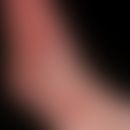Synonym(s)
DefinitionThis section has been translated automatically.
Chronic venous blood return disturbance with venous hypertension in the standing position as well as consecutive edema formation in the ankle area. The consequences are chronic, with increasing persistence irreversible changes of the veins, the skin, the subcutaneous fat tissue and the muscle fascia(dermatoliposclerosis - or dermatolipofasciosclerosis).
CVI includes the various forms of primary varicosis and post-thrombotic syndrome and their sequelae.
ClassificationThis section has been translated automatically.
Classification of clinical severity according to the CEAP classification:
- C = clinical signs
- E = Etiological classification (congenital, primary, secondary)
- A = Anatomical distribution (superficial, deep, perforating vein, alone or in combination)
- P = Pathophysiological dysfunction (reflux or obstruction, alone or in combination).
The clinical symptoms (see CEAP classification above, "C" = "clinical signs") are classified as follows:
- C0 = No visible or palpable signs of venous disease
- C1 = spider veins and/or reticular varices, no visible or palpable signs of CVI
- C2 = Varicose veins
- C3 = Varicosis with edema
- C4 = Varicosis with trophic skin changes (hyperpigmentation, eczema, lipodermatosclerosis, atrophy blanche)
- C5 = Varicosis with healed ulcer
- C6 = Varicosis with florid ulcer
Classification of chronic venous insufficiency (n. Widmer)
- Stage I: reversible oedema, corona phlebectatica, perimalleolar bulbous veins
- Stage II: persistent oedema, haemosiderosis, dermatosclerosis, lipodermatosclerosis, atrophie blanche, stasis dermatitis
- Stage III: Ulcus cruris (florid or healed)
You might also be interested in
Occurrence/EpidemiologyThis section has been translated automatically.
Prevalence in the general population is between 3 and 11%. In a serial examination of 4530 persons (Tübingen study) aged between 20 and 70 years, stage I CVI was detected in 73% of the persons. The incidence of stage II and III CVI was 13 and 15%, respectively. The male/female ratio was reported to be 1:1.5. Risk factors (contribute to weakening of connective tissue and/or increase in venous pressure):
- Familial predisposition
- Genetic factors
- Activities involving prolonged standing/sitting
- Overweight
- Age
- Pregnancies
EtiopathogenesisThis section has been translated automatically.
Either mechanical obstruction of venous return, e.g. by deep vein thrombosis, or by valve insufficiencies of the deep vein system, the Vv. perforantes or the superficial vein system, as well as the insufficiency of the additional pumping mechanisms (skin pump, joint pumps, muscle pumps, abdomino-thoracic two-phase pump).
See below intrafascial venous insufficiency and extrafascial venous insufficiency, transfascial veins, primary varicosis and secondary varicosis.
ManifestationThis section has been translated automatically.
Average age at development of the full clinical picture: 40 to 50 years.
ClinicThis section has been translated automatically.
Subjective sensation of heaviness or tension, and drawing or dull pain in the legs with oedema of the ankles and lower legs, especially on standing or long walking; relieved by lying down. Local tenderness of trophically disturbed parts. Nocturnal cramps of the calves.
DiagnosisThis section has been translated automatically.
Anamnesis, inspection, palpation, standard venous examination program ( Perthes test, Trendelenburg test, Mahorner-Ochsner test, Valsalva test).
Functional tests: ultrasound Doppler examination, light reflection rheography, plethysmographic procedures ( venous occlusion plethysmography), phlebography, phlebodynamometry.
TherapyThis section has been translated automatically.
Stage (CEAPC2 toC6): The focus is on consistent compression therapy with elastic short-stretch bandages (Pütter technique) until decongestion and maintenance. Class II compression stockings are indicated here, class III compression stockings are also indicated for stagesC3 toC6 of CVI.
Exclusion of deep vein thrombosis of the leg (ultrasound Doppler examination, phlebography) In postthrombotic syndrome lifelong compression is necessary. In case of valve insufficiency and proven venous insufficiency, initiation of venous sclerotherapy or venous surgery according to the extent and location. Targeted physiotherapeutic exercise therapy often improves the immobility that accompanies CVI. Recent studies show promising results with conservative improvement of venous function.
Stage (CEAPC4): In the case of skin changes, symptomatic care, lipid replenishing, scaling therapy, additional anti-eczematous external therapy, see below. eczema.
Stage (CEAP C5 andC6): The compression therapy may be intensified in the centre of the ulcer with adapted foam pads. After diagnosis, periulcerous sclerotherapy if necessary. In addition, especially in the case of chronic congestion and therapy-resistant ulcers, there is an indication for ulcer excision (shave excision) and grinding of the depression. Furthermore, phase-specific ulcer therapy, see also wound treatment.
- Cleaning: Removal of ointment residues with oils (e.g. oleum olivarum) after disinfecting foot baths with e.g. potassium permanganate (light pink). Crusts and necroses are removed surgically. It is also possible to cover the ulcer area with e.g. zinc pastes or zinc ointments (e.g. R001) to protect against softening.
- Antiseptic local therapy: Envelopes with octenidine (e.g. Octenisept) or polihexanide (Serasept, Prontoderm) prevent secondary bacterial colonisation. Local antibiotics make little sense because of the selection of germs and the high risk of sensitization. An internal antibiotic therapy should be carried out in case of transmitted infections according to the antibioogram. Dye-containing solutions for dry brushing should not be used.
- Epithelialization: Hydrocolloid dressings are used to protect the newly formed epithelium. Alternative: Simple fatty gauze dressings (e.g. Jelonet, Oleo-Tuell).
- If epithelialisation is missing, split skin grafts or mesh grafts are used. Keratinocyte transplants still have to prove themselves in routine ulcer therapy.
Excessive granulation tissue can impede epithelialisation: therefore, careful surgical ablation, foam compression and etching with silver nitrate.
NaturopathyThis section has been translated automatically.
Order therapy: Avoid standing and sitting for long periods - better walking and lying down! Avoid heat. Weight reduction, reduction of salt intake, fasting days if necessary (rice and fruit days), exercise therapy - toe and leg muscle exercises to activate the muscle pump; walking training for 20-30 minutes. Mind-body medicine, yoga (shoulder stand, headstand), breathing therapy, lymphatic drainage, kinesiotaping
Hydro-balneo-thermal therapy: compression therapy, hydrotherapy: treading water, knee and thigh casts, lower leg baths, body wraps, sitz baths.
Draining procedures, in particular treatment with leeches, Hirudo medicinalis
Leeches are applied to the congested extremity over the corresponding varicose vein. The suction act takes 20 minutes to 2 hours, during which the leech sucks 3-6 ml of blood. The leech's saliva contains hirudin, calin, hyaluronidase, eglin, bdellin, apyrase, collagenase, destabilase, hementin and organase. These cause the wound to continue to bleed for around 12 hours, causing another 20 - 30 ml of blood to leak out. For this reason, appropriate fleece or absorbent dressings should be placed underneath.
Phytotherapy offers a number of preparations that have been proven in studies to reduce edema and inflammation, increase venous vascular tone and lymphatic drainage while simultaneously sealing the capillaries. These phytotherapeutics may be indicated, for example, if compression therapy is contraindicated.
Red vine leaves: (commercial preparation e.g. Antistax® extra). For chronic venous insufficiency grade I and II, a daily dose of 360 and 720 mg respectively has been shown to reduce lower leg edema to the same extent as compression stockings.
Hippocastani semen: Horse chestnut extracts(Aesculus hippocastanum) are well known as venous therapeutic agents. Highly concentrated extracts from Hippocastani semen (the horse chestnut seed), with the efficacy-determining aescin, have been positively evaluated by Commission E for chronic venous insufficiency. Horse chestnut has an anti-exudative effect due to its vascular-sealing, astringent effect, while at the same time having a venous toning and anti-inflammatory effect. It is administered systemically in a dosage of 2 x 50 mg dry extract per day. Preparations e.g. Venostasin retard®, Venoplant retard®, Aescorin forte®, Noricaven®.
Butcher 's broom root: Butcher's broom root, Ruscus aculeatus, is also available for the treatment of chronic venous insufficiency. Butcher's broom root contains, among other things, steroid saponins such as the substances ruscin and ruscoside, which determine its effectiveness. These stimulate alpha-adrenergic receptors of the smooth muscle cells in the vascular wall. Animal studies show the following effects: increased venous tone, capillary sealing, antiphlogistic, diuretic. The effect has been proven by scientific studies. (Note: Commission E has positively evaluated butcher's broom root for the treatment of hemorrhoids). Preparations: Phlebodril venous capsules®, Cefadyn film-coated tablets®. Cave: The berries of the butcher's broom itself are poisonous, they cause gastrointestinal complaints and somnolence.
Meliloti her ba (sweet clover) (proven by scientific studies; positive monograph by Commission E and ESCOP. Meliloti herba contains coumarin, flavonoids and saponins (commercial preparations: Meli Rephastasan®).
The drug is used homeopathically in various dilutions, e.g. as Veno-loges® N injection solution.
Pinebark extracts (no monograph available from Commission E). Pine bark extracts (mostly obtained from the French maritime pine, Pinus paster) are also used for the treatment of CVI, among other things. The drug contains the catechin active ingredient pycnogenol (leucocianidol), which determines its efficacy. The administration of 50 mg/day of the standardized pine bark extract led to a noticeable reduction in oedema in an 8-week, randomized, placebo-controlled study with 21 patients with CVI. In a comparison of 360 mg Pycnogenol with 600 mg horse chestnut extract, Pycnogenol was superior in terms of lower leg oedema (commercial preparation: Pycnogenol®)
Buckwheat herb (Fagopyri herba) Study situation unclear to date.
Japanese string tree(Sophorae japonicae flos) Study situation unclear.
s.a. Asparagi rhizoma
TablesThis section has been translated automatically.
CEAP Classification |
Severity according to Widmer* |
Clinical picture |
C2 and C3 |
I |
Corona phlebectatica, possible leg edema |
C4 |
II |
Occurrence of skin changes such as stasis dermatitis (eczema, stasis dermatitis), siderosclerosis, pachydermia, hypodermitis, hyperkeratosis, dermatosclerosis, atrophy blanche, hyperpigmentation, purpura jaune d'ocre. |
C5 and C6 |
III |
venous leg ulcer |
Phytotherapy internalThis section has been translated automatically.
Positive monograph:
Red vine leaves, Vitis viniferae folium rubrum: (commercial preparation e.g. Antistax® extra). For chronic venous insufficiency grade I and II, a daily dose of 360 and 720 mg respectively has been shown to reduce lower leg edema to the same extent as compression stockings.
Hippocastani semen: Horse chestnut extracts(Aesculus hippocastanum) are well known as venous therapeutic agents. Highly concentrated extracts from Hippocastani semen (the horse chestnut seed), with the efficacy-determining aescin, have been positively evaluated by Commission E for chronic venous insufficiency. Horse chestnut has an anti-exudative effect due to its vascular-sealing, astringent effect, while at the same time having a venous toning and anti-inflammatory effect. It is administered systemically in a dosage of 2 x 50 mg dry extract per day. Preparations e.g. Venostasin retard®, Venoplant retard®, Aescorin forte®, Noricaven®.
Butcher's broom root, Rusci aculeati rhizoma: Butcher's broom root, Ruscus aculeatus, is also available for the treatment of chronic venous insufficiency. Butcher's broom root contains, among other things, steroid saponins such as the substances ruscin and ruscoside, which determine its effectiveness. These stimulate alpha-adrenergic receptors of the smooth muscle cells in the vascular wall. Animal studies show the following effects: increased venous tone, capillary sealing, antiphlogistic, diuretic. The effect has been proven by scientific studies. (Note: Commission E has positively evaluated butcher's broom root for the treatment of hemorrhoids). Preparations: Phlebodril venous capsules®, Cefadyn film-coated tablets®. Cave: The berries of the butcher's broom itself are poisonous, they cause gastrointestinal complaints and somnolence.
Meliloti her ba (sweet clover) (proven by scientific studies; positive monograph by Commission E and ESCOP. Meliloti herba contains coumarin, flavonoids and saponins (commercial preparations: Meli Rephastasan®).
The drug is used homeopathically in various dilutions, e.g. as Veno-loges® N injection solution.
Without monograph: Pine bark extracts (no monograph available from Commission E). Pine bark extracts (mostly obtained from the French maritime pine, Pinus paster) are also used for the treatment of CVI, among other things. The drug contains the catechin active ingredient pycnogenol (leucocianidol), which determines its efficacy. The administration of 50 mg/day of the standardized pine bark extract led to a noticeable reduction in oedema in an 8-week, randomized, placebo-controlled study with 21 patients with CVI. In a comparison of 360 mg Pycnogenol with 600 mg horse chestnut extract, Pycnogenol was superior in terms of lower leg oedema (commercial preparation: Pycnogenol®)
approved (studies) Buckwheat herb (Fagopyri herba) Study situation unclear to date.
Japanese string tree(Sophorae japonicae flos) Study situation unclear.
s.a. Asparagi rhizoma
Note(s)This section has been translated automatically.
The term CVI for chronic venous insufficiency is not synonymous with the clinical diagnosis of "varicose veins or varicosis". Varicosis does not necessarily lead to chronic venous insufficiency.
LiteratureThis section has been translated automatically.
Bunnell AP et al (2014) Factors Associated with Saphenous Vein Recanalization after Endothermal Ablation. Ann Vasc Surg doi: 10.1016/j.avsg.2014.09.020
Carruthers TN et al.(2014) Interventions on the Superficial Venous System for Chronic Venous Insufficiency by Surgeons in the Modern Era: An Analysis of ACS-NSQIP. Vasc Endovascular Surg PubMed PMID: 25487248.
- Garreau C et al (1988) Evaluation of venous therapy. Venous tonics, vascular protectants and thermal cures. What are the advantages for the patient? Phlebol 41: 857-876
- Hesse G, Stiegler H (2003) Ultrasound diagnostic techniques in dermatologic angiology and phlebology. Dermatologist 54: 614-625
- Kistner RL et al (1996) Diagnosis of chronic venous disease of the lower extremities: the "CEAP" classification. Mayo Clin Proc 71: 338-345
- Lentner A et al (1994) Mobility in the upper and lower ankle in advanced chronic venous insufficiency. Phlebol 23: 149-155
- Proebstle TM (2003) Surgical therapy of venous leg ulcers. Dermatologist 54: 379-386
- Vanscheidt V et al (1994) Paratibial Fasciotomy. A new approach for treatment of therapy-resistant venous leg ulcers. Phlebol 23: 45-48
- Willa-Craps C et al (1994) Contact allergy in chronic venous insufficiency Phlebol 24: 93-97.
- Zygmunt JA (2014) Duplex ultrasound for chronic venous insufficiency. J Invasive Cardiol 26: E149-15
- Michalsen A (2012) The naturopathic treatment of chronic venous insufficiency and varicosis. ZKM 4:31-34
Literature (naturopathy)
- Cesarone MT et al (2006) Rapid relief of signs/symptoms in chronic venous microangiopathy with pycnogenol: a prospective, controlled study. Angiology 57: 569-576.
- Diehm C et al. (1996) Comparison of leg compression stocking and oral horse-chest-nutseed extract therapy in patients with chronic venous insufficiency. Lancet 347: 292-294.
- Guex JJ et al. (2010) Quality of life improvement in Latin American patients suffering from chronic venous disorder using a combination of Ruscus aculeatus and hesperidin methyl-chalcone and ascorbic acid (quality study). Int Angiol 29: 525-532.
- Kiesewetter et al. (2000) Efficacy of orally administered extract of red vine leaf AS 195 (folia vitis viniferae) in chronic venous insufficiency(stages I-II). A randomized, double - blind, placebo-controlled trial. Drug Research 50: 109-117.
- Pittler MH et al. (1998) Horse-chestnut seed extract for chronic venous insufficiency. A criteria-based systematic review. Arch Dermatol 134:1356-1360
- Reuter J et al. (2010) Which plant for which skin disease? Part 2: Dermatophytes, chronic venous insufficiency, photoprotection, actinic keratoses, vitiligo, hair loss, cosmetic indications. J Dtsch Dermatol Ges 11: 866-873.
- Riede F et al.(2010) The use of medical leeches for the therapy of venous stasis and hematoma in flap plastic surgery. JDDG 11: 881-889
- Toledo RR et al (2017) Effect of Pycnogenol on the healing of venous ulcers. Ann Vasc Surg 2017; 38: 212-219
- Vanscheidt W et al.(2002) Efficacy and safety of a Butcher's broom preparation (Ruscus aculeatus L. extract) compared to placebo in patients suffering from chronic venous insufficiency. Arzneimittelfoschung: 52:243-250.
- Koch R (2002) Comparative study of venostasin and pycnogenol in chronic venous insufficiency. Phytother Re 16: Suppl. I 1-5.
Incoming links (106)
Acroangiodermatitis; Adiposity skin changes; Aescin; Aescin; Ambulatory venous hypertension; Aneurysm, arteriovenous, peripheral; Angiodermite purple et pigmentée; Angiodermite purple et pigmentée; Arnicae flos; Asparagi rhizoma; ... Show allOutgoing links (69)
Aescin; Antibiotics; Asparagi rhizoma; Aus ausleitende verfahren; Buckwheat herb; Butcher's broom root; Casts (Kneipp); Catechine; Commission E monographies; Compression therapy; ... Show allDisclaimer
Please ask your physician for a reliable diagnosis. This website is only meant as a reference.










